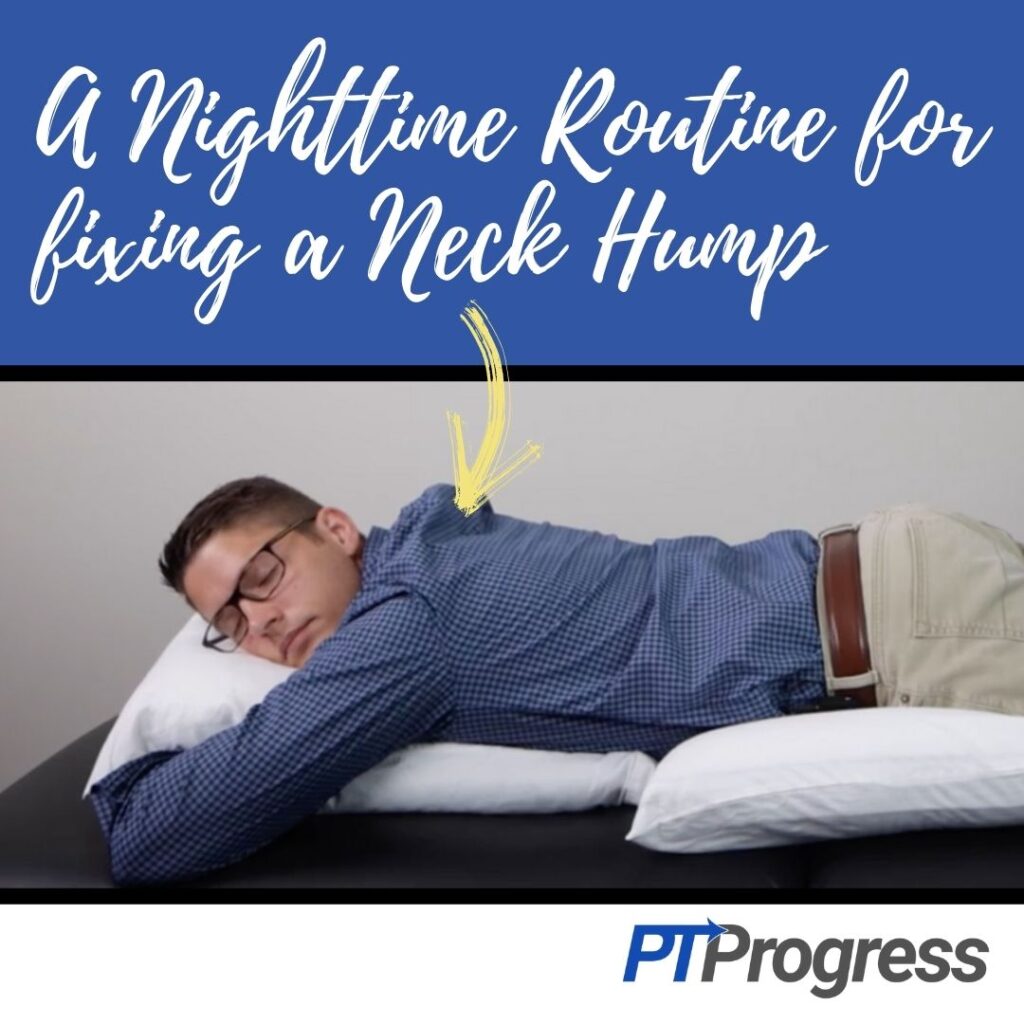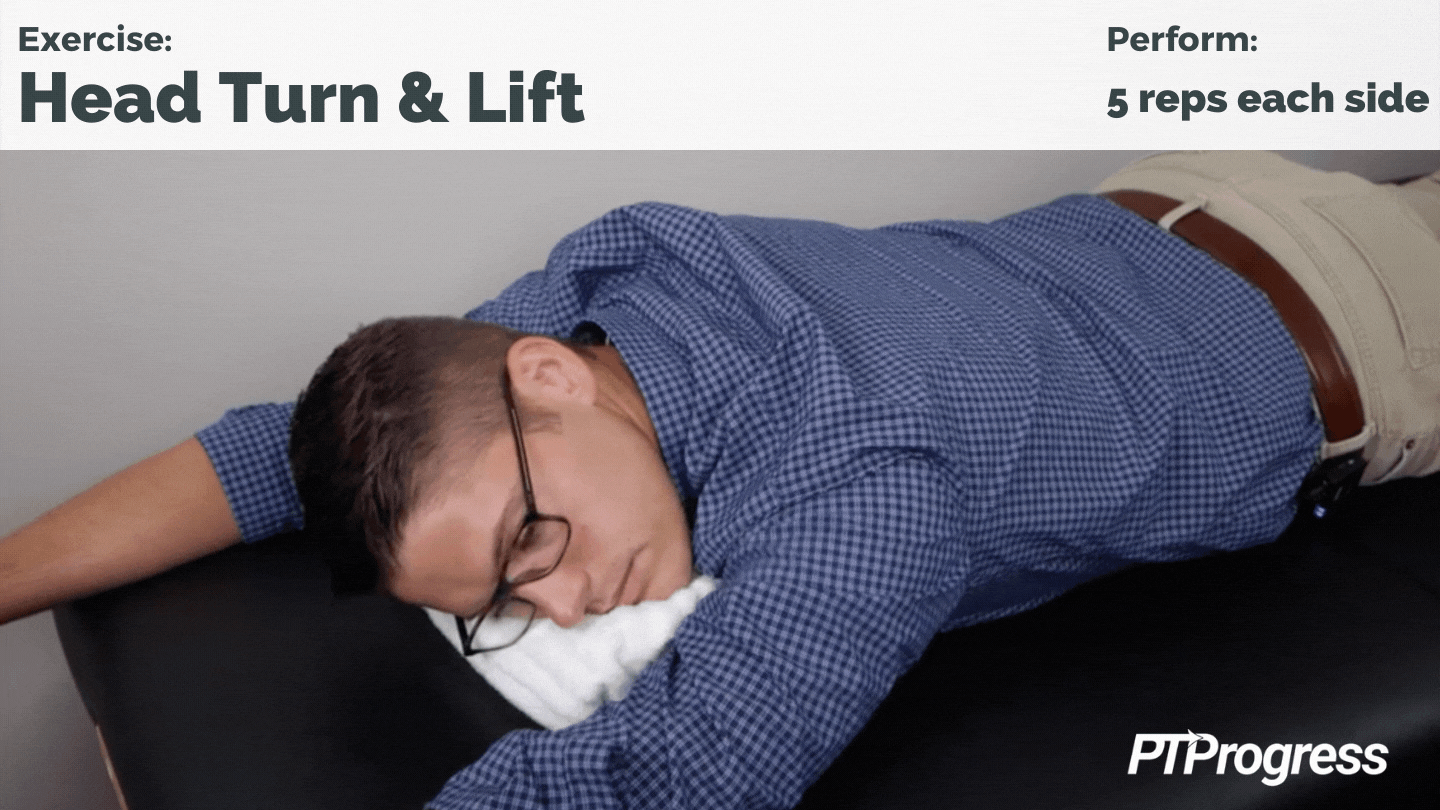
Do you have a dowager’s hump? It’s the figurative term for a hump at the base of your neck caused by poor posture. Although you can improve your posture through active stretching and exercise, you may wonder whether you can fix that dowager’s hump at night – in your sleep.
I’m happy to report that you can. Even if you feel like a hunchback, there are things you can do at night, in bed, that will help correct your posture and reverse your dowager’s hump. If that sounds good to you, keep reading!
Why do I have a dowager’s hump?
Although the term “dowager” means an elderly widow, anyone can develop a neck hump. As a Physical Therapist, I’ve encountered neck humps on men and women of all ages. They all have one thing in common: poor posture.
And it’s not just a correlation; neck hump is directly tied to poor posture. As your shoulders round and your neck juts forward, the weight of your head puts pressure on the C7 vertebrae.
Continue this forward head posture for too long, and your body will adapt. Extra fat deposits will start to build up around the C7 vertebrae to protect it under pressure. Over time, those fatty deposits will amass into a stubborn – yet totally reversible – dowager’s hump.
How to Fix Dowager’s Hump at Night
Now that you know what it is and why it’s there, you can wage war on your neck hump – a campaign you’ll want to run day and night. So to combat dowager’s hump in your sleep, follow the steps below.
Step 1: Mobilize your Hump
The first step is to mobilize the area. Your neck hump is probably stiff – after all, it’s been like that for a while. Mobilizing it gives you a better chance at changing your posture.
For this activity you’ll need a towel or a balled-up pair of socks. Ideally, you’d perform mobilization on a flat surface such as the floor, but you can try this on your bed if you have a large towel to use.
First, roll up the towel, then lie down so that it’s directly under your spine. Make sure the towel is thick enough to keep you from sinking into the bed; you should feel it pressing into your back.
Hold this position for 20 to 30 seconds. Then scoot the towel slightly to the right of your spine and hold for another 30 seconds. Switch sides. Repeat this 3-4 times on each side as you work along the sensitive areas of your neck.
After mobilizing the area, reinforce good posture by squeezing your shoulder blades together and moving your arms into external rotation (out to either side like a door hinge, with elbows bent). Do this 20 to 30 times.
The point: Gentle mobilization helps bring the spine into a neutral position and stretches the front of the chest. If your chest muscles are too tight, they’ll pull your shoulders forward and make your bad posture even worse.
Step 2: Stretch your Neck
This next step will feel a little more natural for stomach sleepers than it will for back sleepers. But this one you can certainly do in your bed.
While lying on your stomach, place your arms overhead and turn your head to one side. Now carefully extend your neck slightly, up from your pillow. You should feel as if you’re trying to look behind you across the room.
Repeat 5 to 10 times and then turn your head to the other side for the same reps. Stop the exercise if you start to feel dizzy or lightheaded.

The point: This subtle movement stretches the anterior neck muscle and promotes extension at the CT junction, where the cervical and thoracic vertebrae meet.
Now that you’ve done your pre-sleep warm-up and have mobilized, stretched, and worked on strengthening the right muscles, it’s time to address your sleeping posture.
Step 3: Adjust your Sleep Posture
The way you sleep is absolutely critical to combating dowager’s hump. Your objective here is to gradually straighten your spine by removing or adding support.
Back sleepers: For you, the goal is to remove support until your head aligns with your spine. If you use multiple pillows, work your way down to one pillow. And once you’re comfortable using one pillow, transition to a thin pillow.
These changes can feel huge, so give yourself two weeks to work your way down to one pillow. To help you transition, you can place a rolled-up towel underneath your pillow to prop it up. Over the next week or so, gradually unroll the towel until it is flat.
The point: A double pillow or a really thick pillow forces your neck into flexion and puts even more pressure on your neck hump. You need to remove that pressure so the body stops sending fatty tissue to that area.
Stomach sleepers: Compared to back sleepers, a stomach sleeper might have a harder time adjusting their sleep position. That’s because most stomach sleepers hug a pillow, which rounds the back even more.
My suggestion? Try sleeping on your side. But if that isn’t possible, you can modify your stomach-sleeping position by placing a thin pillow or folded towel under your pelvis.
The point: By elevating your pelvis, you’ll reduce the arch in your low back. An arched back makes the upper back round even more, which is not what you want when you have a dowager’s hump.
Not only will this elevation help align your upper spine, it will also help relieve low back pain.
Fixing a Dowager’s Hump Takes Time
By mobilizing your hump, stretching your neck, and adjusting your sleeping position, you’ll make great strides towards better posture and a smaller neck hump. Just remember that these changes take time, even if you’re working day and night on it.
Postural improvements require consistent effort, so try this nighttime routine for 30 days. By then, you should start to see a change in your posture and feel better at night.
To reduce neck hump and improve your posture for good, check out these exercises.

